A video installation (in-progress) featuring the two-decade voyage of gender-fluid academic and narrator who is lured by the chant of hybrid alter-human sea “creatures,” based on stories and visuals of the Nereids “The Wet Ones”
I received a Bogliasco Foundation Fellowship to do an artist residency in the coastal town of Bogliasco, Italy. I stayed there in the early Fall of 2024 and prepared an art installation that was influenced by its phenomenal scenery.

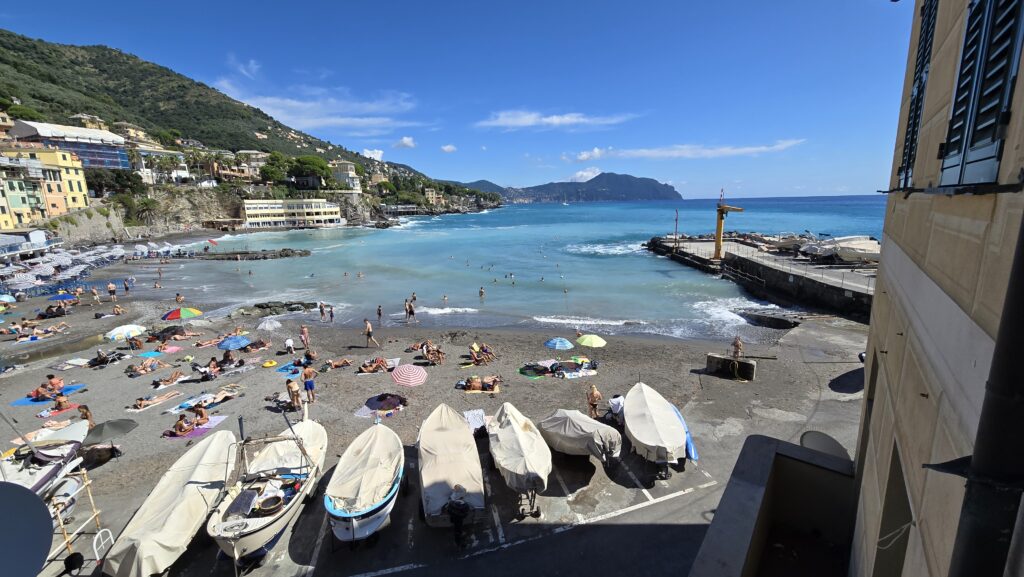

I conceived of a mixed-media performance and a video installation, in which viewrs are surrounded by media-screens-on-wheels, that could be rolled around easily be gallery visitors. People could decide to push the screens away or pull them closer, depending on their state of mind during the gallery visit.
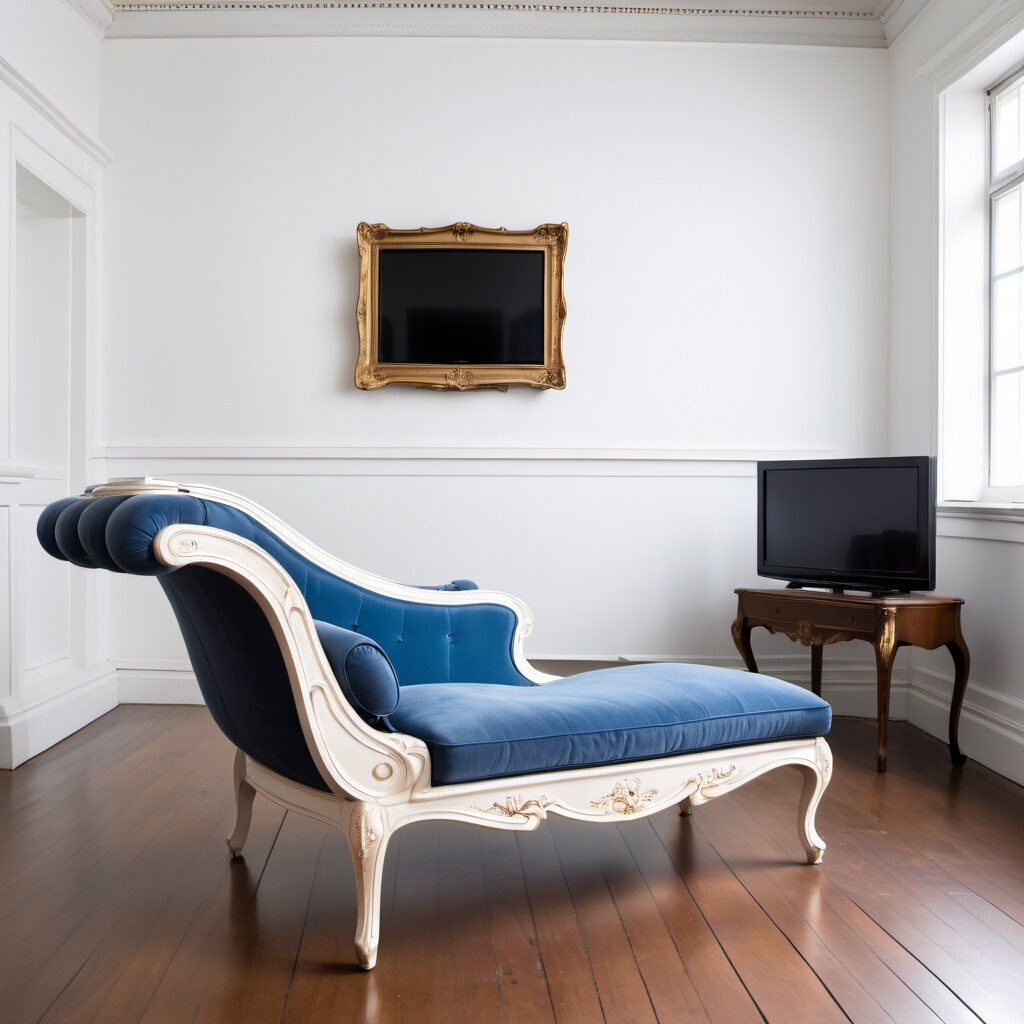
People may arrive in the gallery already somewhat exhausted from life, from ongoing art visits, or specifically their social media immersion. This is not to say that art should just provide a resting space for people, but it would be good if they could log off, sit down and drift casually or more intensely amongst art works. Maybe if visitors could rest in a chaise lounge, it would be easier to restore one’s senses and absorb the art works.
The problem with many deepfakes as we see them circulate on social media is that we have become numb to them. The technology has been appropriated to become an engine of exploitative hate-media. This “deepfake norm” has become our common perception of the technology. . Hence I have been thinking of ways to to re-appropriate them and try out different registers of affect.
What if we were sitting in this chair and would be able to get a visit from an AI or deepfake subject? As I started to walk along the Ligurian coast and was able to take many swims there, together with the other artists, I thought of deepfaking hybrid creatures of humans and sea animals. I was able to hear and feel the sea’s humidity and incredible roar constantly, while I also stared at swimmers in the small pebbly beach of Bogliasco. Then I conceived of the idea to rethink futuristic deepfake bodies as wet and playful ‘mythical’ beings with healing qualities.

These hybrid creatures are inspired by different myths and histories that I keep finding as I develop the project. Firts of all, there is the Greek mythology of Nereids as 50 water-nymphs who were seen as ‘escorts’ protected the different qualities of the sea, such as calming the sea, enabling the spawning the fish, creating sea-foam, looking after the sea’s ‘bounty’ by mixing water with brine, enabling a safe voyage for fisher(wo)men, etc. For instance there is the Nereid, Erato, one of the 50 Nereids. Her name means ‘the awakener of desire’ and she is part of a group of 50 who all together protect the ocean.
In Belgium, an exhibition and formidable catalogue entitled Hybrids: Composite Creatures from Fables. Myths and Legends (Hopper & Fuchs, 2024) in artspace de Warande was devoted to the topic of composite human-animal creatures within different cultural histories. In the introductory essay by Leen Huet, we see examples of such creatures in Jacob Van Maerlant’s medieval encyclopedia (1340-1350 of fauna and flora, entitled Der Nature Bloeme. There is an example of a sea-monk, a sea-deer and of course mermaids, who according to Van Maerlant are repulsive and harmful creatures with sharp claws and fish scales. They lure seamen with their beautiful voices and music, then drown them and eat them. Seamen are aware of their presence and cover or put plugs in their ears when they hear them.(p. 17)
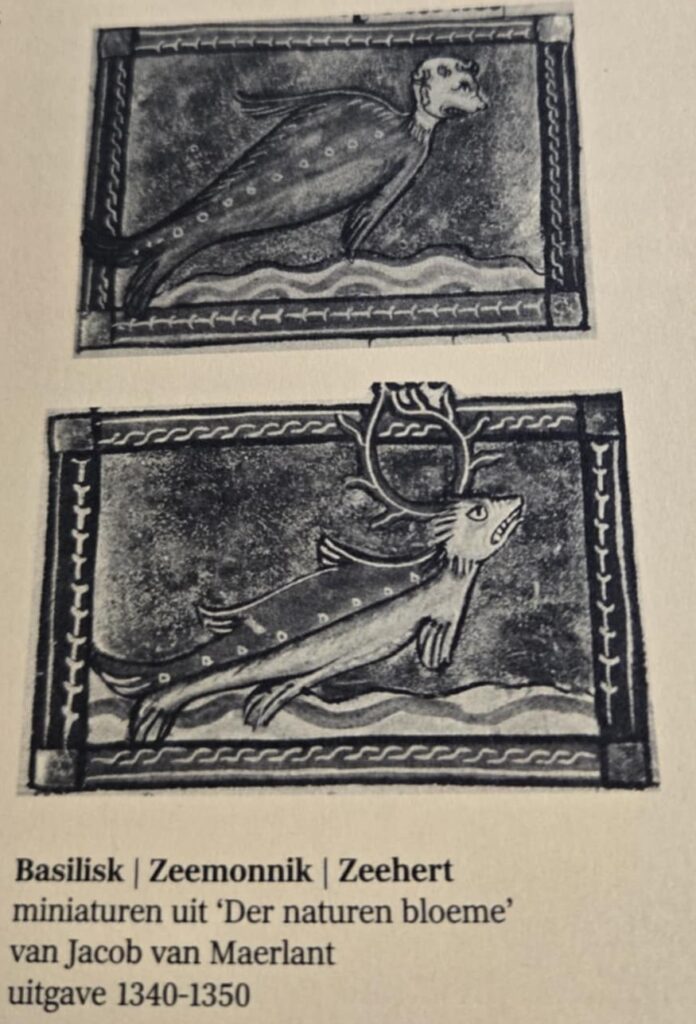
These creatures were also as reproduced by people and sold internationally for the Wunderkammer (“Room of Wonders”) where functionaries and entrepreneurs would collect objects and curiosities, including animal-skeletons, fossils, stones, shells, drawings from conquests around the world. The city of Antwerp, Belgium, was an important industrial hub in the 16th century that also supported this trade. For instance, there were little mermaids made by Japanese Fishermen based on their belief in Ningyo “humanfish”and consisting of actual fish skeletons and pieces as well as paper maché. The Antwerp merchant and maker of maps, Abraham Ortelius, also possessed one of these Wunderkammers and below is a 1655 drawing of one in Copenhagen.
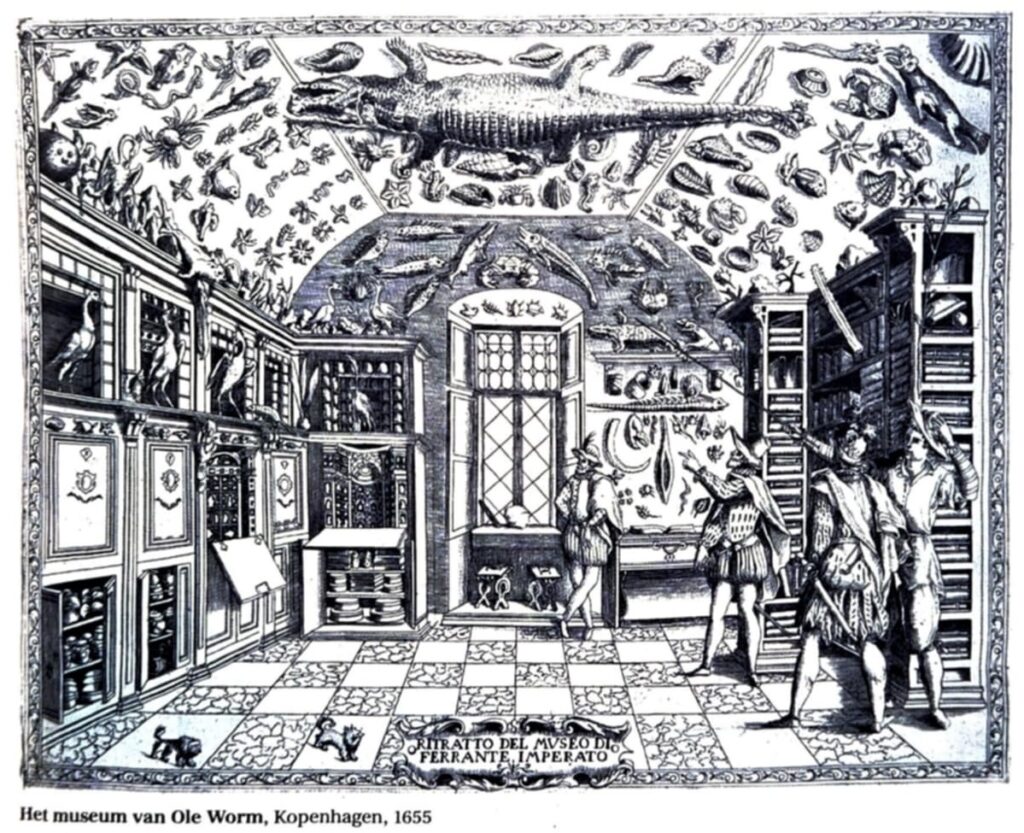
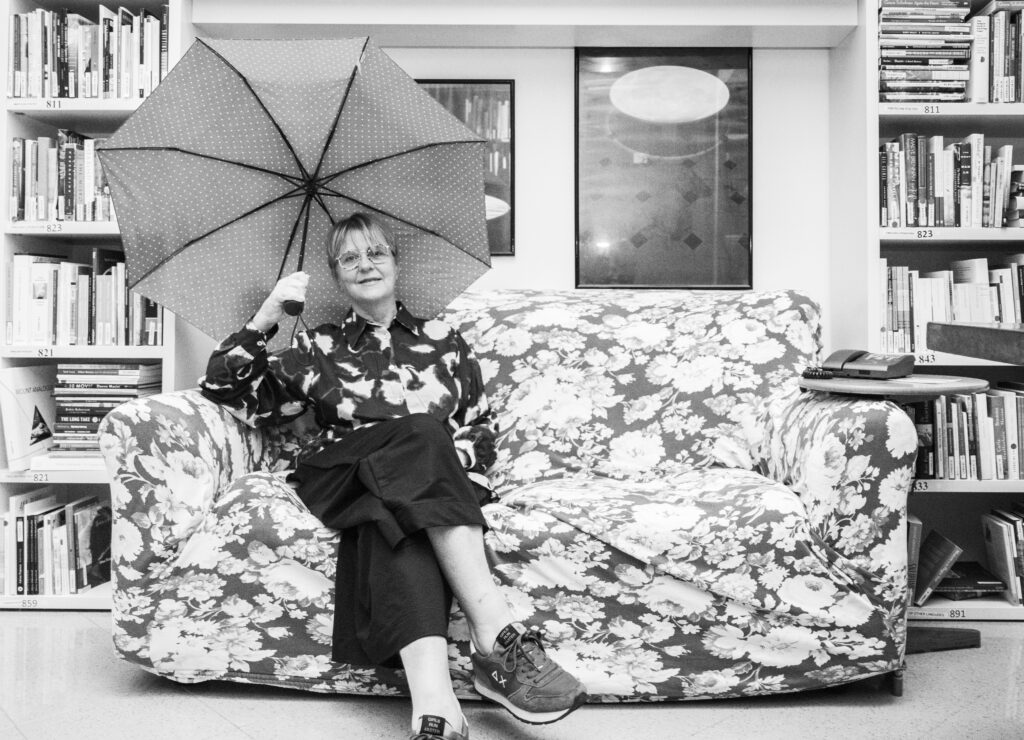
If one would search online for common imagery or AI generated sea nymphs or mermaids, one would find very clichéd animated drawings of cute curvy girls with big eyes and fish tails.
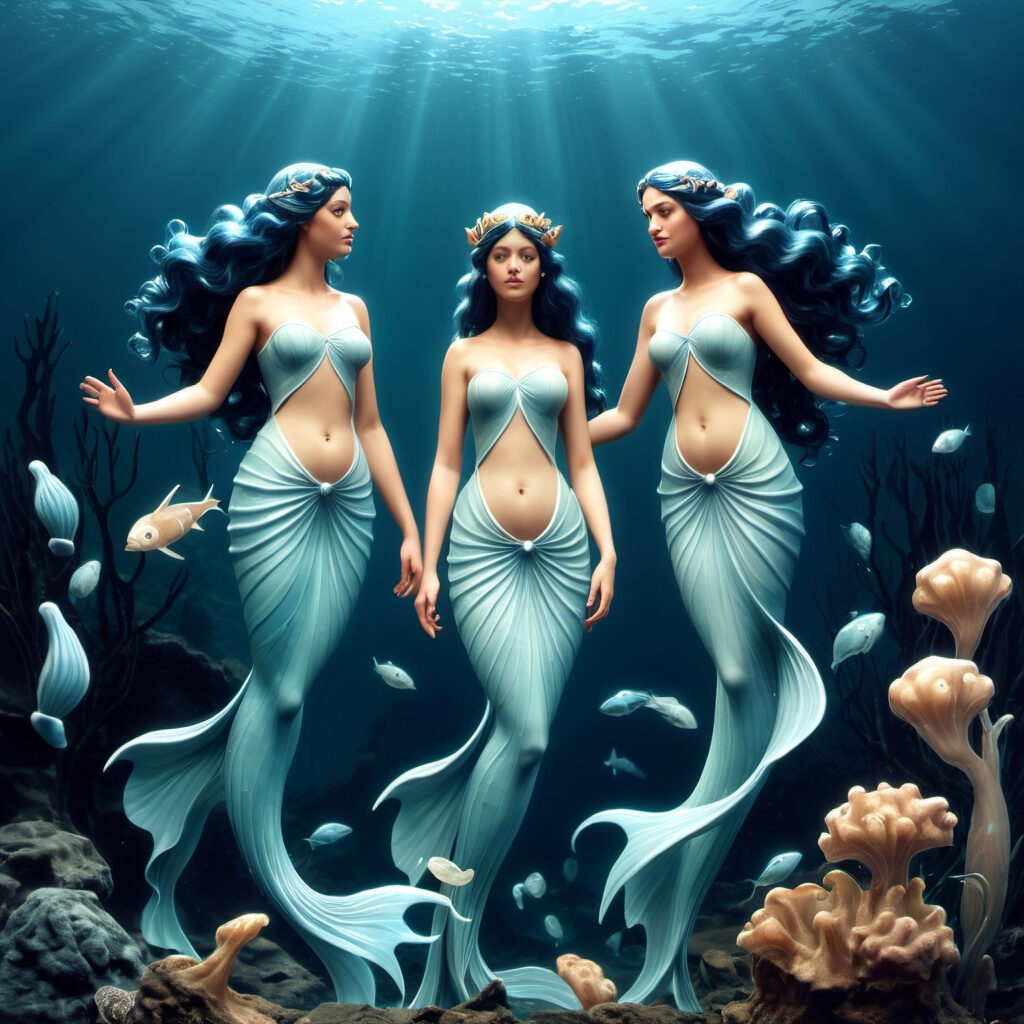
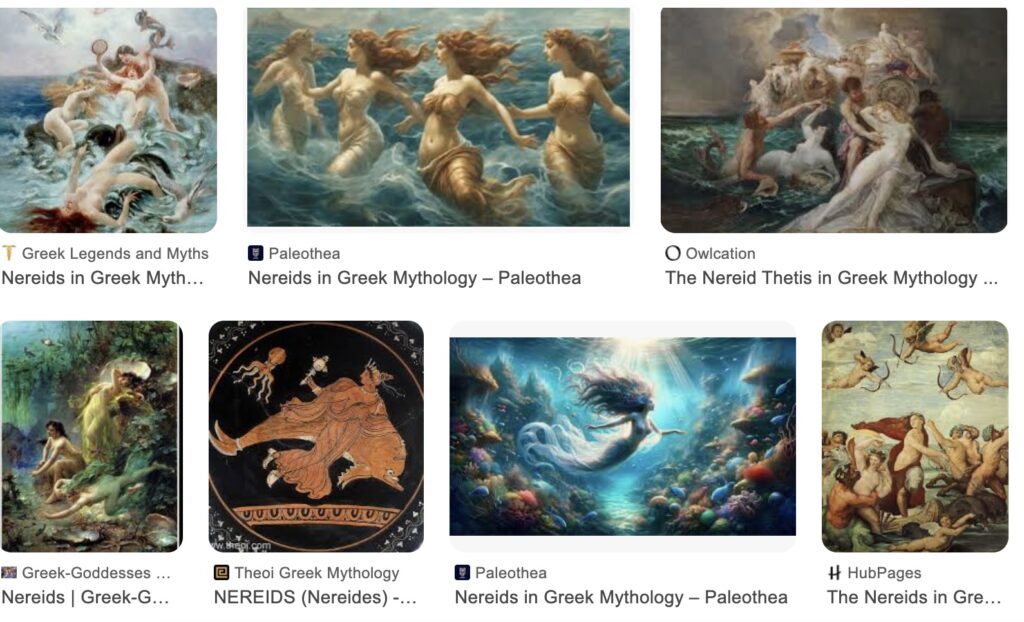
This is almost as sad and predictable as the common exploitative images of deepfake porn, in which celebrities and public figures who have gorgeous faces, are remixed onto the template-bodies of advertising and commercial pornography. But it is alos reassuring to know that people are interested in using GenAI to generate the less predictable and consumable composites. An example of given by Gabriele de Seta in his essay “An algorithmic folklore: Vernacular creativity in times of everyday automation” when people using genAI collectively produced a monstrous figure ‘The Crungus’ after somebody posted one on Twitter. According to de Seta, it transformed from an individual creation to a collective myth-making effort. More and more Twitter user shared their own experimentations with different prompts across models, such as, ‘friendly crungus’, ‘soft crungus’, ‘crungus birth’, ‘Baby Crungus’, or ‘anti-crungus political poster’ adding both detail and legitimacy to the emerging Crungus myth. (1)
Hence the task upon me is to create alluring swimming creatures that steer away from AI platitudes that have hijacked our imagination. One example would be the East-Asian myths of sea-hybrids, such as Hong Kong’s Lo-Ting– a creature with human limbs and fish-like head and torso.

Or there is the Japanese mythic reptile-figure Nure-Onna (Wet Woman) who was also turned into animation by the Singaporean artist Ho Tzu Nyen in his animations, Night March of Hundred Monsters.

Details from Ho Tzu Nyen’s catalogue of Night March of Hundred Monsters

Or, finally, I am inspired by 15th century Italian paintings showing the heads of little angels that melt amongst cloudy skies and towering over the Madonna and Child, such as the painting “Cariani” by Giovanno Busi (1485-1547)
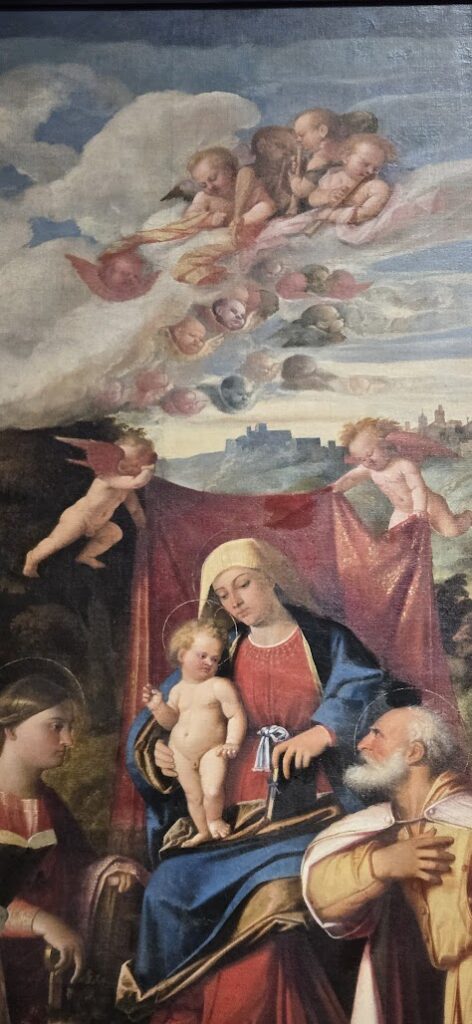
Thus I would like to film human faces that turn into or merge with swimming water-critters as “the wet ones”.
Here is my provisional script:
An intellectual mountain walker (Dr.Jacobs) is drawn to a body of water. When he reaches the water, he is compelled to take of his suit and tie and swims with them. Water-critters are swimming around him like little bubbles that carry and cradle Dr. Jacobs and merge with him. After a while they get out of the water, playing around and drying blissfully in the sun. The Nereids slowly transform and puts on a nice human suit & tie, starts the walk back home.
+++
(1) Gabriele de Seta, “An algorithmic folklore: Vernacular creativity in times of everyday automation.” In C. Arkenbout & I. Galip (Eds.), Critical meme reader III: Breaking the meme. Institute of Network Cultures, 233-253.
